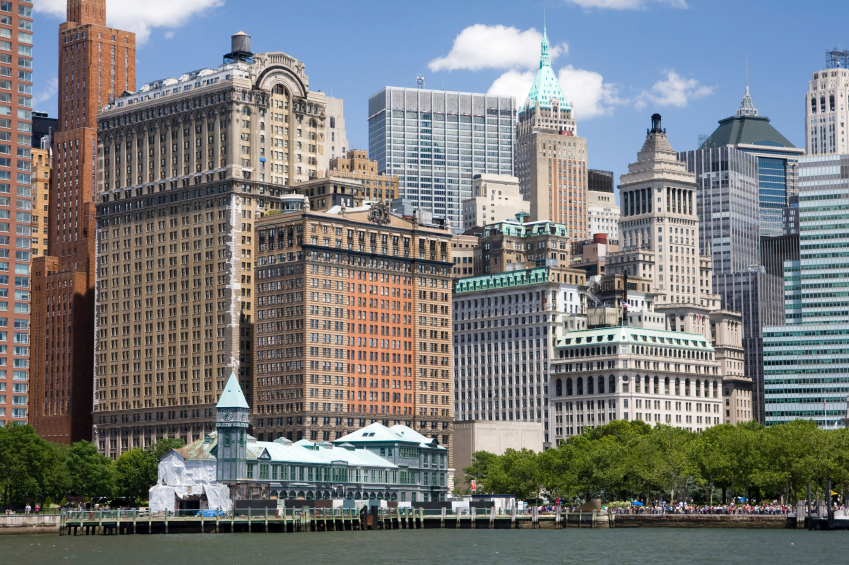History Around You
Manhattan’s Financial District (FiDi) is brimming with historic charm, and today it continues to embody the city’s prosperous spirit. Its winding streets and landmark buildings weave the intricate tale of Manhattan’s rich past and how it came to be the leading commercial power that it is today. FiDi’s famous brick buildingsdate back to America’s colonial days, when residents still referred to the area as Nieuw Amsterdam, well before it became more commonly known as New York in 1667. Many of these buildings live on as converted business and residential spaces, giving people a chance to truly live inside a piece of New York history.
When walking through the Financial District, get your first history lesson by observing the ground on Stone Street. The famous cobblestone road beneath your feet was not always known as Stone; in fact, before the 1640s, it was known as Hoogh Straet (which translates to High Street), and later became Brewer Street in 1655. In 1794, New Yorkers changed the name of the street, christening this unique passageway “Stone Street” due to its status as one of the first streets in the area to be paved in cobblestone.
However, the Stone Street that New Yorkers are familiar with today is not the original. The current Stone Street is one that was rebuilt following the Great Fire of 1835, a blaze that demolished nearly 17 city blocks over the course of one December night. Today, Stone Street is designated as a historical district by the New York City Landmarks Preservation Commission and is blocked off from city traffic. It is currently home to a number of retail businesses, bars, and restaurants, including Stone Street Tavern (52 Stone Street), a local watering hole with warm wooden interiors and a sprawling outdoor seating area that has stood the test of time.
Workers from the higher floors of 85 Stone Street (the former home of Goldman Sachs) can look down on Hanover Square for a unique peek into the past. This pleasant, triangular-shaped park, frequented today by local business people, was formerly known as a commercial center of the city. The park, which has been known as Hanover Square since the 1730s, is named for the House of Hanover, the royal dynasty that reigned in England after King George I took over the crown. Today, visitors come to peer at the famous statue of American patriot Benjamin Franklin that presides over this public green space.
While Alexander Hamilton may be the trending American forefather, FiDi is trending along with him because much of the hit Broadway play Hamilton takes place here. George Washington was first inaugurated at what is now the Federal Hall National Monument (26 Wall Street), and his statue sits outside in commemoration. Meanwhile, Fraunces Tavern (54 Pearl Street) is a three-story brick building said to be the location where revolutionaries laid plans for the New York Tea Party, and where a collective of local merchants formed the first New York Chamber of Commerce. Visitors to the tavern can enjoy pub grub and drinks in an atmosphere decorated with 18th-century drinking artifacts and more.
Today, the neighborhood’s newest luxury conversion, 101 Wall, boasts Piet Boon-designed interiors, as well as access to state-of-the-art features and world class amenities. However, its glazed brick exterior, which dates back to the 30s, sets it apart. With its Art Deco-inspired design and bronze-accented façade, 101 Wall demonstrates how seamlessly old meets new in one of New York’s most unusual neighborhoods. The historic building offers 52 new luxury Financial District condos for sale, all of which combine classic design and moder convenience. This aesthetic mirrors the Financial District as it exists today. A simple stroll down the Waterfront Esplanade and through the neighborhood’s cobblestone streets reveals evidence of Wall Street’s history—an experience that is as exhilarating as it is informative for anyone with a penchant for uncovering the past.
History enthusiasts and new residents of 101 Wall will find no shortage of exciting attractions in the Financial District, where the landmarks are more abundant than anywhere else in New York. For fans of past patriots or keen observers of the titans of finance and industry, or for those who simply want to have a drink in some of the country’s oldest pubs, there’s no better place to explore than lower Manhattan.
Image Courtesy of ©iStock.com/Alessandro Lai


